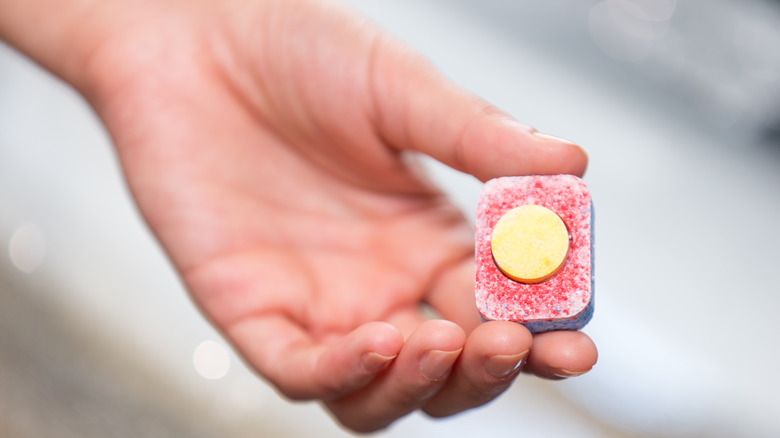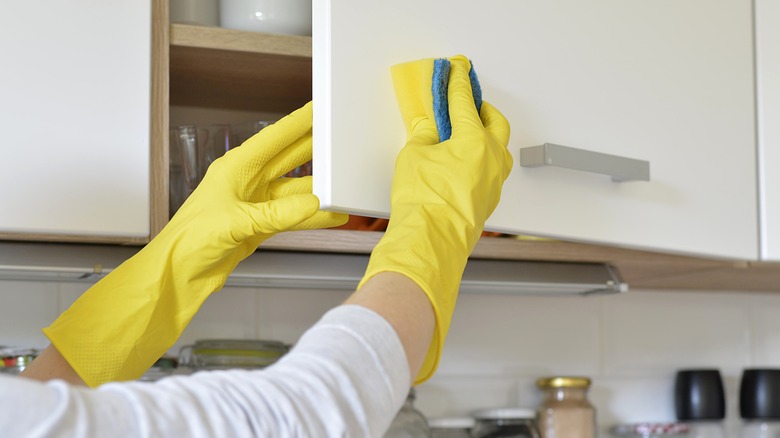Are Dishwasher Tablets The Secret To The Cleanest Cabinets Ever?
Keeping your cabinets clean can be a tough task, especially if you have small children. Dirt, dust, and grime often build up quickly, and can leave your kitchen looking extra messy. If this is the case for you, simply open up your cupboard and reach for dishwasher tablets. Not just useful for, well, the dishwasher, dishwasher tablets are also an unexpectedly good way to clean your kitchen cabinets.
You should aim to clean the cabinets in your kitchen on a weekly basis, or when something spills to prevent dirt building up and ants. A wipe down with hot water is fine from week to week, but a more in-depth clean should also be carried out regularly if you use your kitchen cabinets daily. Dishwasher tablets are a great way to achieve this, and will leave your cabinets super fresh, and that's not to mention how easy they are to use. The next time you go to spray your cabinets with all-purpose cleaner, consider reaching for this dish-washing staple instead.
Get your cabinets looking sparkly clean once again
To refresh your cabinets with this method, fill up either a large tub or your sink with hot water and then throw in a dishwasher tablet. Let it dissolve before taking a clean cloth and using the water to clean your cabinets. You should find that any grease marks come away easily. The reason this trick works is because dishwasher tablets contain alkaline compounds and surfactants which are designed to break down the oil and grease on your dishes. However, they will also get rid of similar marks on your cabinets.
If you're worried about a dishwasher tablet leaving your cabinets looking grainy, simply make sure it has dissolved completely in the water before beginning to clean. Once you have finished wiping, we recommend wiping with a damp cloth to ensure no residue remains — you don't want sticky cabinets after all your hard work cleaning. It isn't likely that your dishwasher pods won't dissolve properly, but doing this will guarantee your cabinets are left fully clean. Additionally, we recommend spot testing this method first on the inside of your cabinet, as some materials are more susceptible to damage than others.

